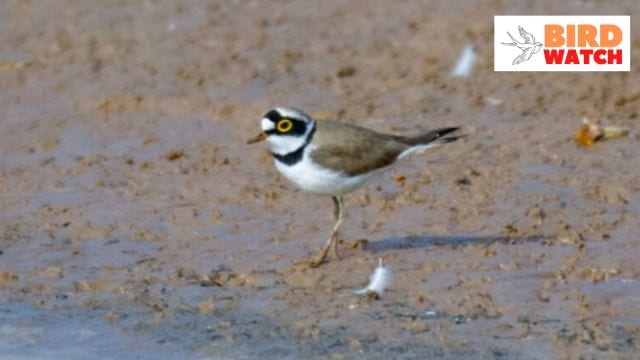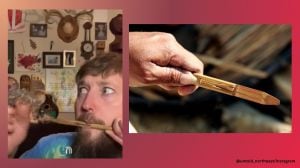- India
- International
Bird Watch: Little ringed plover, a common resident bird found near wetlands, waterbodies
These birds measure approximately 14 cm to 17 cm in length and are appealing due to their multicoloured plumage and distinct yellow eye-ring.
 The specific name "dubius" in Latin means "doubtful," as Sonnerat, writing in 1776, believed this bird might be a variant of the common ringed plover. (Express Photo)
The specific name "dubius" in Latin means "doubtful," as Sonnerat, writing in 1776, believed this bird might be a variant of the common ringed plover. (Express Photo) The little ringed plover (Charadrius dubius) is a common resident bird typically found near wetlands and water bodies with mud banks and shingle shores. Both male and female birds of this species share similar characteristics.
Adult birds have grey-brown backs and wings, a white belly, and a white breast with a single black neckband. They sport a brown cap, a white forehead, a black mask around their eyes with white above, and a short dark bill. Their legs are flesh-coloured, and their toes are webbed.
These charming birds measure approximately 14 cm to 17 cm in length and are particularly appealing due to their multicoloured plumage and distinct yellow eye-ring. Observing their chicks wandering along riverbanks can be a soothing experience.
The genus name Charadrius originates from the late Latin word for a yellowish bird mentioned in the fourth-century Latin translation of the Bible known as the Vulgate. It is derived from the ancient Greek ‘kharadrios’, which describes a bird found in river valleys (“kharadra” meaning “ravine”). The specific name “dubius” in Latin means “doubtful,” as Sonnerat, writing in 1776, believed this bird might be a variant of the common ringed plover.
Interestingly, little ringed plover is one of the species protected under the Agreement on the Conservation of African-Eurasian Migratory Waterbirds (AEWA), although India is not a member of the AEWA.

These birds breed in open gravel areas near freshwater and construct their nests on the ground, often on stones with minimal plant growth. Both male and female birds take turns incubating the eggs. Insects and worms form a significant part of their diet.
In addition to little ringed plover, there are two other plover species, lesser sand plover and Kentish plover, which are rarely spotted in the interstate Chandigarh region (ISCR) as they are passage migrants.
Must Read
May 11: Latest News
- 01
- 02
- 03
- 04
- 05






































